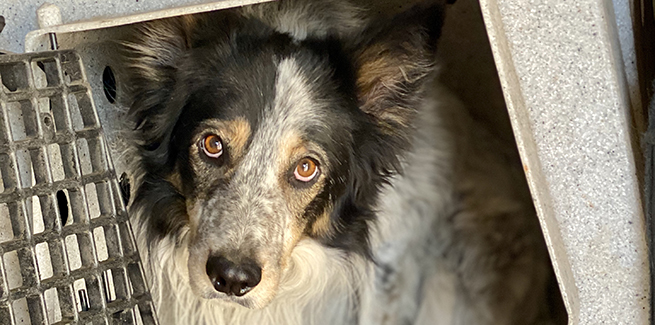Click ’em or crate ’em: Car restraints for pets save lives

“Every veterinarian can tell you a story about how, if you stop short in your car, an unrestrained dog will go flying forward,” says Michelle Mayers, VMD, owner of AAHA-accredited Hillcrest Animal Hospital in Simpsonville, South Carolina.
For Mayers, that story is the story of Annie.
Annie is a 105-pound Newfoundland and Mayer’s patient. Four years ago, Annie, who also serves as a therapy dog for her owner, Cathy, was riding in the backseat of Cathy’s car. Unrestrained.
Cathy was stopped at a red light when an empty logging truck slammed into her car from behind. “Annie flew from the back of the car to the front,” says Mayers.
Annie didn’t just fly to the front. She hurtled. And she hit Cathy.
The impact dislocated Annie’s hip—Mayers says she suffered a right coxofemoral luxation which required a visit to an orthopedic surgeon and several thousand dollars to correct—and put Cathy in the hospital with a concussion.
Granted, Mayers says, Newfies are big animals, but size isn’t really the issue. “At 35 miles per hour, even a 60-pound dog becomes a 2,700-pound projectile.”
Like Annie, unrestrained companion animals can injure or kill themselves or other passengers in the event of an accident. In addition to becoming projectiles that may hit other passengers or hurtle through the interior of the car, unrestrained pets can easily crash through windows and end up in the road. And if they don’t get injured or killed in the accident itself, many pets will run away from the confusion of the frightening scene, some never to be found.
Annie and Cathy’s accident turned Mayers into an outspoken advocate of pet-safety restraints, and she became something of an activist by working with the South Carolina Association of Veterinarians (SCAV) to raise awareness about automobile safety for pets.
The SCAV sells pet restraints on their site, and the proceeds go to philanthropic causes. “We’ve raised more than $6,000 in seatbelt sales [that goes toward] senior citizens who can’t afford veterinary care, Mayers says, calling it, “A win-win-win!”
“Secured crates in the car can be just as useful as seatbelts,” Mayers adds, “since they prevent an unrestrained dog from becoming a projectile” in an accident. In fact, secured, hard-sided crates might afford even more safekeeping than seatbelts do. Having a physical barrier surrounding a dog or cat provides an extra layer of protection upon any impact. Many crates and seatbelts have been tested in vehicle crash simulations by the Center for Pet Safety. Find out more about crash-tested pet crates here.
“An unrestrained dog is more of a distraction in your car than your cellphone,” Mayers said. “It comes to a head, for everyone.” Literally, in Cathy’s case—she’s lucky to be alive.
Four years later, both Cathy and Annie are doing “fabulously,” says Mayers. “Especially when they use a seatbelt and harness!”
Annie never drives anywhere without them.
Photo credit: © Laura Esterman



